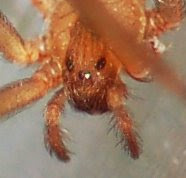

This evening I saw a woodlet on the woodpecker tree with its dad. They hung out for a while but Dad had gone to a nearby oak by the time I got the camera. I am so excited, though—this is the first time that I've really seen proof that the baby woodpeckers, once fledged, continue to hang out with the parents. I've seen Woodie and Woodina continue to come to the birdfeeder and fly away with mouths full of seed; but I haven't seen them with the little ones before.


All of the pictures above are of the woodlet. He/she stayed on the woodpecker tree a little longer, then also flew to the oak, and I followed the two of them with my camera to yet another tree. Then Dad flew to a phone pole, and a woodlet followed, and then another woodlet followed, and while all three were hanging out there, the other parent came and joined them! I wasn't quick enough to get a shot of that, but I did get Dad and the kids up there together.
 This is Dad in the other oak tree
This is Dad in the other oak treeThe baby on the woodpecker tree was very gray compared to its parent. The striped back is quite distinct, though gray & black rather than white & black; and its little head is still quite unmarked by color at all. It also still has the sort of spotty look that all new baby birds seem to have.

I wonder if the little ones go into the tree at night with the parent(s) to sleep. Each year after the fledging, the parents—especially the dad—continue to hang around the tree and go in the hole each night. Does the whole family sleep in there?

 The juniors are the two lower birds
The juniors are the two lower birds
































